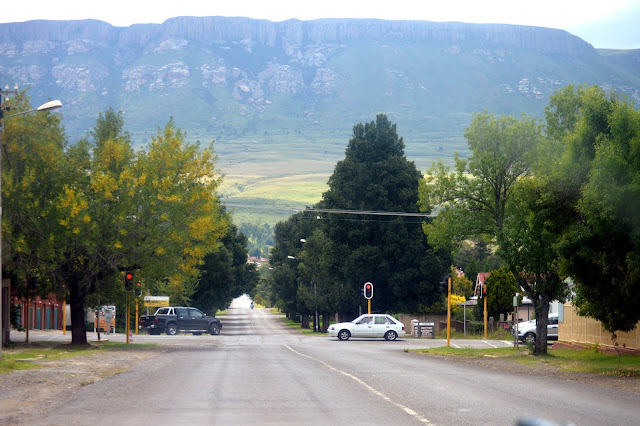We are part of the street as much as we are part of the town.
Our house address is 17A Stuart Street.
 |
| You will find it in the little orange block right on the right-hand side.
De Oude Huize Yard was built in 1860!
 |
First Title Deed of De Oude Huize Yard
The name Stuart relates to two possibilities.
*Major Warden named all his children after the Royal house of Stuart. Rumours were that he was an unofficial grandson of Bonnie Prince Charlie.
* Stuart Jacobus, 1803 – 1878, author, diplomatic agent and advocate of emigration, took part in the Sand River Convention in 1852.
Stuart
Street in 1904 with a Rickshaw left wide sidewalk right and a railway
line. Horses pulled the wagons (or coco-pans “coco pans”).
 |
After the Boer War in 1904, the British had a huge camp on Kings Hill. Here they broke many stones, cut and trimmed it to be used for building purposes. To get these stones in the town a track was laid from Kings Hill to the town. Some of these stones were used when the Townhall was built. This information probably also explains the existence of many houses and buildings in Stuart St, which were built of stone. There were also traces of the track in Vowe and Bester streets.
 |
| Stuart street on a peaceful Sunday morning. The traffic light is situated on the corner of Stuart and Piet Retief Streets |
The early magistrates were Bester, Chauvin, Theron, D Cloete, J De Kock, Bramley, (that was accused of high treason), Canisius, J N Boshoff, J Z de Villiers, F W van der Riet, Charles Warden. (Steytler 1932)
Mr Joseph De Kock resides at De Oude Huize Yard from 23 July 1861 till 23 April 1903 almost 42 years.
An almost mad Kitchener was tormented by the Concentration Camp women and children when they did not show respect when the funeral procession of Dr Godfrey Reid pass them. Instead, a hissing sound was made. Reid was killed during the Groenkop battle on Christmas day.
The women and children were then moved to “Tin Town” close to Ladysmith. Some were transported in open train carriages and the lucky ones in a proper passenger car.
The guns that were handed in was demolished and was loaded onto a “bok”. There it was transported to the courtyard of the Court House. Here the 5th Coy Royal Engineers destroyed the weapons with a 16 pond-hammer on an anvil and hit to pieces.
The house on the left was the home of the Sieberts-family on the corner of Stuart and Mauritz streets. The building on the right was a private school.
Further down Stuart street is the Harrismith Club. This is still standing but been looted.
Sandstone curbs in Stuart Street
Stuart street with 42nd Hill in the back
Thank you to Leon Strachan, Nico Moolman en Biebie de Vos for their contribution
Till next time
Hennie & Sandra














